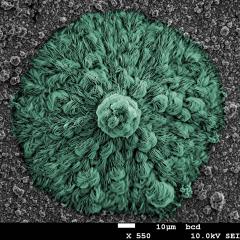Researchers at The University of Queensland have created the world’s smallest wave tank - a microscopic “ocean” on a chip smaller than a grain of rice, and it's opening doors to major scientific breakthroughs.
Using a film of superfluid helium just a few millionths of a millimetre thick, scientists can now study how waves behave in ways never seen before. Unlike ordinary water, superfluid helium flows without friction, making it perfect for observing pure wave motion at ultra-small scales.
As Dr Christopher Baker explains one can see waves bending backwards, shock fronts, and even mysterious ‘solitons’ - waves that travel as dips instead of peaks. These effects have been predicted in theory for decades, but we’ve finally seen them happen on a micro-device produced at UQ’s electron beam lithography facility.
What makes this even more impressive? The entire system fits on a chip and uses laser light to both create and measure the waves - compressing what used to take days in massive lab tanks into milliseconds.
It’s like shrinking a 100-metre tsunami lab down to something smaller than your hair. This could completely change how we study turbulence, weather, even how we design wind turbines and ship hulls according to Professor Warwick Bowen. And because the device is made using the same technology used for next generation semiconductor chips, scientists can “program” how the fluid behaves, adjusting the simulated gravity, energy flow, and wave patterns with incredible precision.
In the future, such tiny chips could help us:
- Better predict weather and ocean turbulence
- Understand fluid dynamics in both classical and quantum systems
- Design more efficient renewable energy systems
- Explore new laws of physics
This breakthrough is just the beginning - and it was published in the prestigious journal Science.



